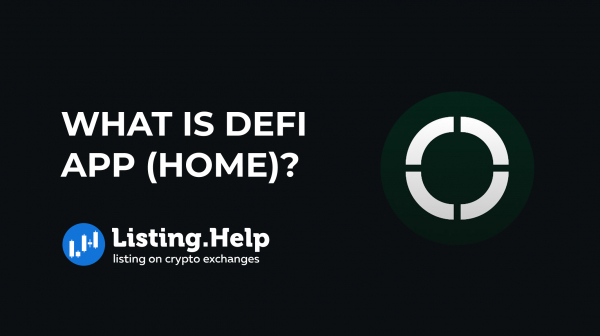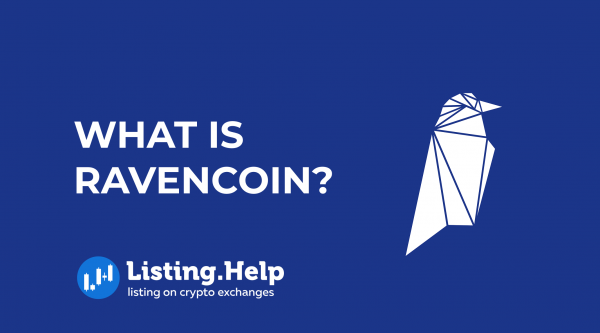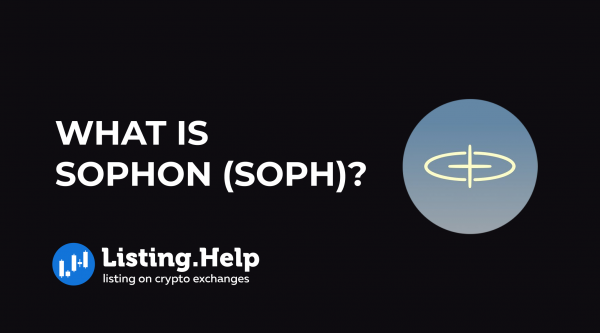What is Cross-Chain, and How does it work?
 January 29, 2024
January 29, 2024 Updated: January 27 2025, 07:21
Updated: January 27 2025, 07:21
LEAVE A REQUEST
Launching your own token project? Our experts are ready to help with listing on exchanges, market making, marketing and other solutions
SUBMIT APPLICATIONThe Web3 realm is increasingly adopting a multi-chain approach, where dApps are distributed across a wide array of blockchains, layer-2 solutions, and appchains. A key challenge in this expanding ecosystem is the inherent inability of blockchains to communicate with external systems, including their inability to interact with one another or with traditional web infrastructures.
In such a varied landscape, it’s crucial for these diverse on-chain environments to be interoperable, allowing seamless communication and interaction. Cross-chain interoperability protocols are fundamental in this regard, providing essential infrastructure for the transfer and exchange of data and tokens across different blockchain platforms.
This discussion aims to shed light on the concept of cross-chain interoperability within the blockchain space. It examines the functioning of cross-chain messaging solutions, their current limitations, and how innovative approaches like the Cross-Chain Interoperability Protocol (CCIP) are being developed to address these issues, thereby fostering greater connectivity across blockchain networks.
What is Cross-Chain?
Cross-chain technology plays a pivotal role in linking various blockchain networks, facilitating the interchange of data and assets. Each blockchain operates as an independent ledger, with distinct ecosystems like Bitcoin and Ethereum. In these separate networks, assets such as BTC and ETH are typically non-transferable to one another. Cross-chain technology, however, provides a solution, enabling the transfer and exchange of assets and information between these distinct blockchains.
Looking at the bigger picture, this technology is key to enhancing communication and asset mobility across diverse blockchain platforms. It’s not just limited to asset transfers like BTC to ETH; it’s about the seamless flow of data and functional capabilities between networks. This interconnectivity greatly expands the scalability and applicability of blockchain technology, paving the way for a more unified and accessible blockchain environment and breaking down the barriers of isolated data ecosystems.
Why Is Cross-Chain Communication Important?
The importance of cross-chain interoperability is paramount in evolving the Web3 ecosystem, creating essential links between the existing Web2 structures and new Web3 offerings. This form of interoperability, particularly via cross-chain smart contracts, is key to reducing ecosystem fragmentation, thereby boosting capital efficiency and enhancing liquidity.
In the DeFi sector, the concept of unrestricted composability has sparked the creation of complex applications. These applications are crafted by merging various dApps into an integrated whole, achieving outcomes beyond their individual capacities. However, this integration faces obstacles due to the multitude of distinct blockchain networks. A smart contract’s ability to interact is typically restricted to contracts within its native network, limiting its broader composability. This limitation becomes a hurdle for applications aiming to stay relevant and user-centric in the fast-evolving, multi-chain landscape.
To overcome this, applications often need deployment across several platforms. Although this increases their accessibility, it can lead to scattered liquidity and a less satisfactory user experience. Moreover, the effort and resources required for such widespread deployment are substantial. These could be more effectively used in refining the applications’ core features and business aspects. Thus, cross-chain communication is not merely an innovative aspect; it’s a vital necessity for the seamless functioning and effectiveness of applications in a diverse multi-chain environment.
Cross-chain interoperability streamlines blockchain application development, enabling a single, unified dApp to interact with multiple smart contracts across various blockchains. This approach eliminates the need for deploying numerous versions of the same application on different networks, simplifying the development process and broadening the application’s functionality across the blockchain ecosystem.
How Does Cross-Chain Work?
Cross-chain technology focuses on confirming the status of a source blockchain and then transmitting the pertinent transaction details to a target blockchain. This dual-step process is crucial for enabling a variety of cross-chain interactions.
At the heart of this system is the cross-chain bridge, which facilitates token transfers from the originating blockchain to the target blockchain. This involves either immobilizing or annihilating tokens on the original chain via a smart contract and then replicating or generating them on the target chain through a different smart contract. In essence, these bridges serve as specialized cross-chain messaging protocols, mainly used for moving tokens between diverse blockchains, and are typically designed for specific use cases connecting two blockchains.
Yet, these bridges are just a basic aspect of cross-chain functionalities. More advanced applications, like programmable token bridges, open up possibilities for more intricate cross-chain activities. These advanced functionalities cover a range of operations, from token swapping and lending to staking or depositing tokens as part of the bridging transaction. Furthermore, generalized data messaging protocols expand cross-chain capabilities, paving the way for more sophisticated decentralized applications (dApps). These include cross-chain DEXs, financial markets, NFT platforms, gaming applications, and other complex cross-chain innovations.
Challenges in Cross-Chain Interoperability
Cross-chain interoperability introduces unique challenges that are absent in a standard multi-chain framework. Yet, with a focus on robust security, these challenges can be navigated to unleash a realm of new functionalities.
1. Balancing Key Factors: A primary issue is achieving the right equilibrium between security, trust, and flexibility in cross-chain communications. This equilibrium is essential for seamless collaboration between smart contracts on different blockchains.
2. Strengthening Against Vulnerabilities: The robustness of cryptoeconomic systems hinges on their defense against the most vulnerable attack vectors. In cross-chain contexts, poorly secured bridges pose risks to assets, even if the base networks are secure.
Critical factors here include:
Improving bridge security by diversifying participant profiles or amplifying cryptographic measures during both the verification of state changes and the relaying of transactions.
3. Ensuring Transaction Finality: It’s crucial to establish finality in cross-chain token bridges, guaranteeing that once transactions are executed on the source chain, they are irreversible on the destination chain. Without this certainty, reversals in the source chain, like block reorganizations, could have negative ripple effects on the destination chain.
Addressing these challenges is essential for the successful implementation and adoption of cross-chain solutions.
Cross-Chain Interoperability Protocol (CCIP)
The CCIP stands as an innovative, open-source framework for cross-chain communication, covering messaging and token transfers. It’s designed to be blockchain-agnostic, aiming to meet the growing need for complex cross-chain interactions. CCIP establishes a standardized connection among diverse blockchain networks through a single interface. Its architecture is highly composable, allowing for easy integration with various Oracle services within a programmable token bridge framework, thereby supporting sophisticated cross-chain activities and applications.
Emphasizing security, CCIP addresses the significant losses incurred from bridge hacks, which amount to over $2 billion. This development, led by the Chainlink Labs Research Team with renowned experts like Ari Juels, Dan Boneh, Lorenz Breidenbach, and Dahlia Malkhi, adopts a security-first philosophy.
The protocol introduces multiple security features, including a Risk Management Network to monitor and react to suspicious activities and outliers. It also integrates decentralized oracle computation, drawing from a pool of reliable node operators with established track records. Furthermore, CCIP employs the Off-Chain Reporting (OCR) protocol, a proven mechanism for safeguarding substantial assets across Chainlink’s suite of services. These combined measures significantly bolster CCIP’s security capabilities, positioning it as a reliable tool for cross-chain interoperability.
Conclusion
Cross-chain interoperability is a key driver in evolving Web3, set to unlock novel use cases and align user experiences with those found in the Web2 era. Essential for speeding Web3’s adoption, these solutions allow for the development of complex dApps with user-friendly interfaces. They play a vital role in enabling various organizations, including businesses, governments, and institutions, to interact securely with diverse blockchain environments.

Also, don’t forget to check out our blog at Listing.Help for more tips and news about this stuff. You’ll find lots of helpful info and advice there to help you out with your crypto investments.







 June 28, 2025
June 28, 2025 








